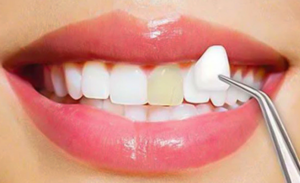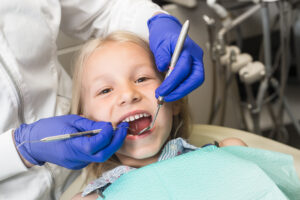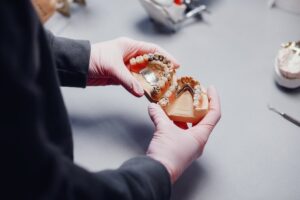If you feel a sharp pain while chewing your food and there is no apparent cause, you may have cracked tooth syndrome. It’s a unique condition characterized by an incomplete tooth fracture. The tooth is partially cracked, but the fissured portion hasn’t broken off.
Cracked tooth syndrome is caused by fractures that are too small. It is usually not detectable by X-Ray. Sometimes, the fracture is below the gum line, making proper diagnosis even more challenging.
Common Symptoms of Cracked Tooth Syndrome
Not every cracked tooth shows symptoms. However, when it does, some common signs include:
- Gum inflammation
- Swelling around the teeth
- Pulsating pain
- You may experience toothaches while biting or chewing, especially when you release the bite.
- You may also experience tooth mobility or displacement if the crack is severe.
Causes of a Cracked Tooth
Several factors can lead to a cracked tooth. An injury or a bad bite can cause a cracked tooth. Damage to the tooth can expose its inner layers, making it susceptible to illness-causing bacteria. The primary causes of a cracked tooth include:

- Traumatic facial injury
- Incessant teeth grinding
- Temperature swings caused by drinking hot and cold beverages
- Weak/shakey tooth due to old age
- Biting or chewing tough foods
- Extensive tooth decay if left untreated
- Large fillings can aggravate tooth fractures by weakening the teeth
Types of Cracked Teeth
As they absorb most of the impact when chewing food, molars are more prone to cracks. In comparison, front teeth are more likely to be fractured as a result of trauma.
According to the American Association of Endodontists (AAE), 5 types of cracks can occur in teeth based on an article published in the Journal of Esthetic and Restorative Dentistry.
- Craze Lines : These are tiny cracks in the enamel, the tough outer covering of the teeth. They are not painful and do not necessitate treatment. Fissures in this classification are less grave because they do not penetrate beneath the enamel’s surface.
Mouth trauma, using teeth as tools, chewing on hard objects, nail-biting, and previous dental drillings can lead to a cracked tooth.
- Fractured Cusps : This type of crack is most common around a dental filling. Fractured cusps usually do not affect the pulp of the tooth, the soft center of the tooth containing nerves and blood vessels, and thus cause little pain.
- Cracked Tooth : A cracked tooth is a partial fracture that begins on the chewing surface and extends downhill toward the tooth’s root. A cracked tooth is considered more serious due to its size and location. If the fracture has extended down into the pulp, tooth extraction followed by root canal treatment is the only option left.
- Split Tooth : If an incomplete cracked tooth is left undiagnosed, it will lead to a split tooth. The fissure in a split tooth runs from the top of the tooth to the gums. An incomplete crack can split the tooth into two segments if left untreated for an extended period.
- Vertical Root Fracture : This tooth fracture is initiated beneath the gum line and progresses towards the tooth’s chewing surface. This fracture has the potential to affect the entire length of the root. This crack comes to light only when the gum and bone are visibly infected.
Diagnosing Cracked Tooth Syndrome
As we know, cracked tooth syndrome is commonly caused by tiny fractures. That’s why X-rays also fail in the effective diagnosis of this syndrome. This is because the X-ray beam must be in-line with the crack to penetrate it.
To properly detect cracked tooth syndrome, your dentist may evaluate things like :
- Your dental history; have you ever undergone dental surgery?
- Your food habits, whether you regularly eat hard foods like nuts, crabs, lobsters, or hard shell tacos.
- Conduct a visual inspection. The dentist may use magnifying glasses to watch out for tiny little cracks.
- Your dentist may use a dental explorer to properly scratch the tooth’s surface to detect small fissures.
- The poor pulp can be seen using X-rays. There is a chance that they have hidden cracks.
- Your dentist might ask you to bite something tightly, revealing your dental fractures.
- Use a dental dye; it can quickly draw attention to the fracture lines.
Can a Cracked Tooth Heal on Its Own?
The simple answer to this question is ‘No’. Our teeth are not bones. Due to a lack of living tissues and blood vessels, they cannot heal themselves. However, you can follow the remedies suggested below to avail yourself a time cushion before seeing your dentist:
- To minimize swelling, apply an ice pack to the outside of an affected tooth.
- To clean your teeth, rinse your mouth with lukewarm salt water.
- To relieve pain, take nonsteroidal anti-inflammatory drugs like Advil and Motrin IB, etc. It’s always better to consult a medical professional before doing so.
Cracked teeth can be painful and often go unnoticed until they cause bigger problems. Learn more about the causes of cracking, how to prevent it, and what to do if you have a crack in your smile at Valley Ridge Dental. Visit our website to learn more.
Recommended Treatments for a Cracked Tooth
A cracked tooth will require medical supervision. The size of the crack, its location, and its extent (whether it has reached the tooth’s pulp or not) will determine the future course of treatment.
If the crack in the tooth does not enter your tooth pulp, you probably do not require any treatment. Consider a porcelain cup with a crack in it that can still hold water without leaking. The tooth must be treated immediately if the fracture continues beyond the enamel.
Furthermore, various measures can be taken, which are listed below:
- Dental Bonding : Dental composite resins are used to fill up the fissures in this method. This method can repair minor to moderate cracks and also helps in the restoration of tooth shape.
- Teeth Reshaping : Teeth reshaping is popularly known as ‘Cosmetic Contouring’ and ‘Odontoplasty’. This method is used when the fissures are tiny and extend only to the enamel.
Cosmetic contouring comes in handy in treating cracked teeth, which is otherwise used to change your tooth’s shape, length, or appearance to give you a charming smile.
- Veneers : In this method, a small porcelain cap is fixed on the top of your tooth. Veneers are a great option when there is still a substantial amount of natural tooth.

- Extraction : If the crack goes down to the tooth’s pulp and severely damages the tooth’s root and nerves. Then, unfortunately, that’s the only option left to us.

- Crown : When there is insufficient natural tooth structure to support a veneer, we look for another option, an artificial dental crown. As the name suggests, just as was the case with veneers, the fractured tooth here is also covered with a porcelain or ceramic cap.
Do You have a Toothache that Just Won’t go Away? Book an Appointment at Valley Ridge Dental Today!
If you’re experiencing pulsating tooth pain, you must visit our dentist to determine the cause. Cracked tooth syndrome is often to blame and can be treated quickly and easily.
Book an appointment with Valley Ridge Dental today if you are looking for experienced dental professionals to help you diagnose and treat your cracked tooth So, Contact us today!




